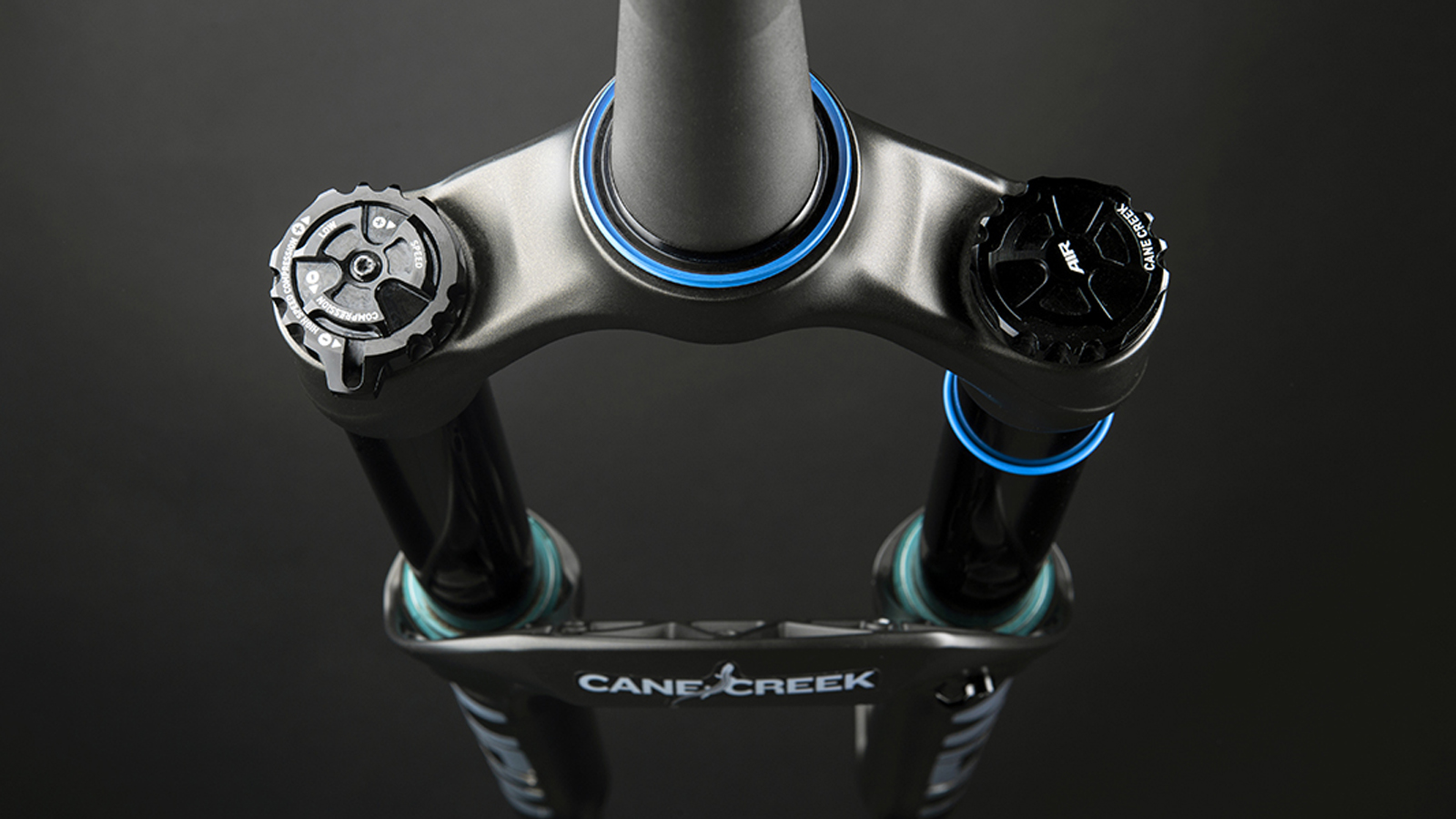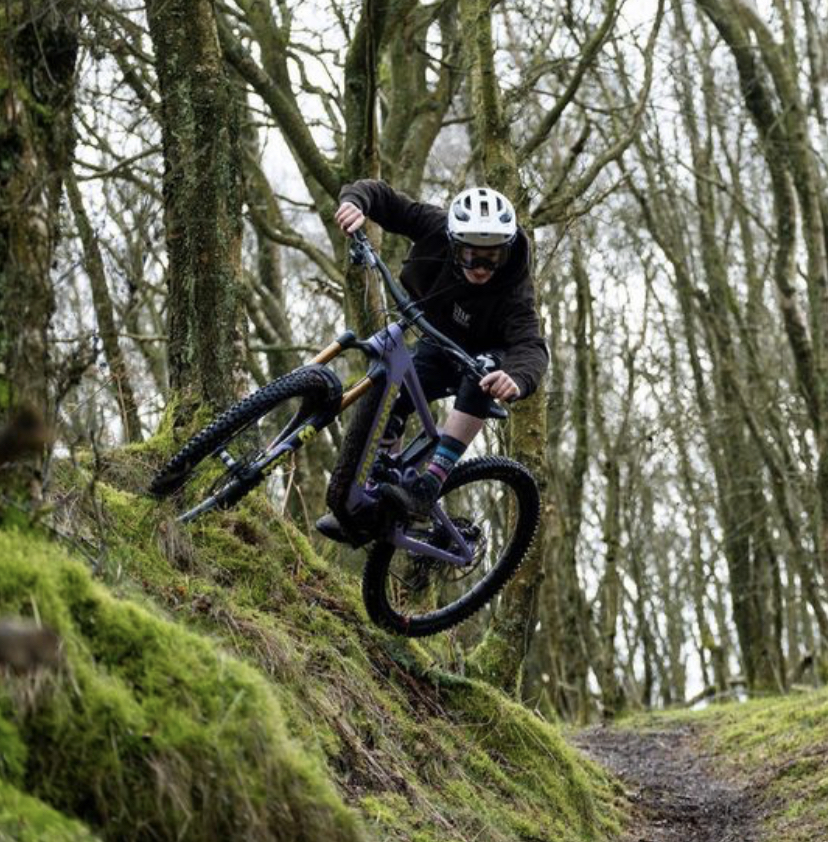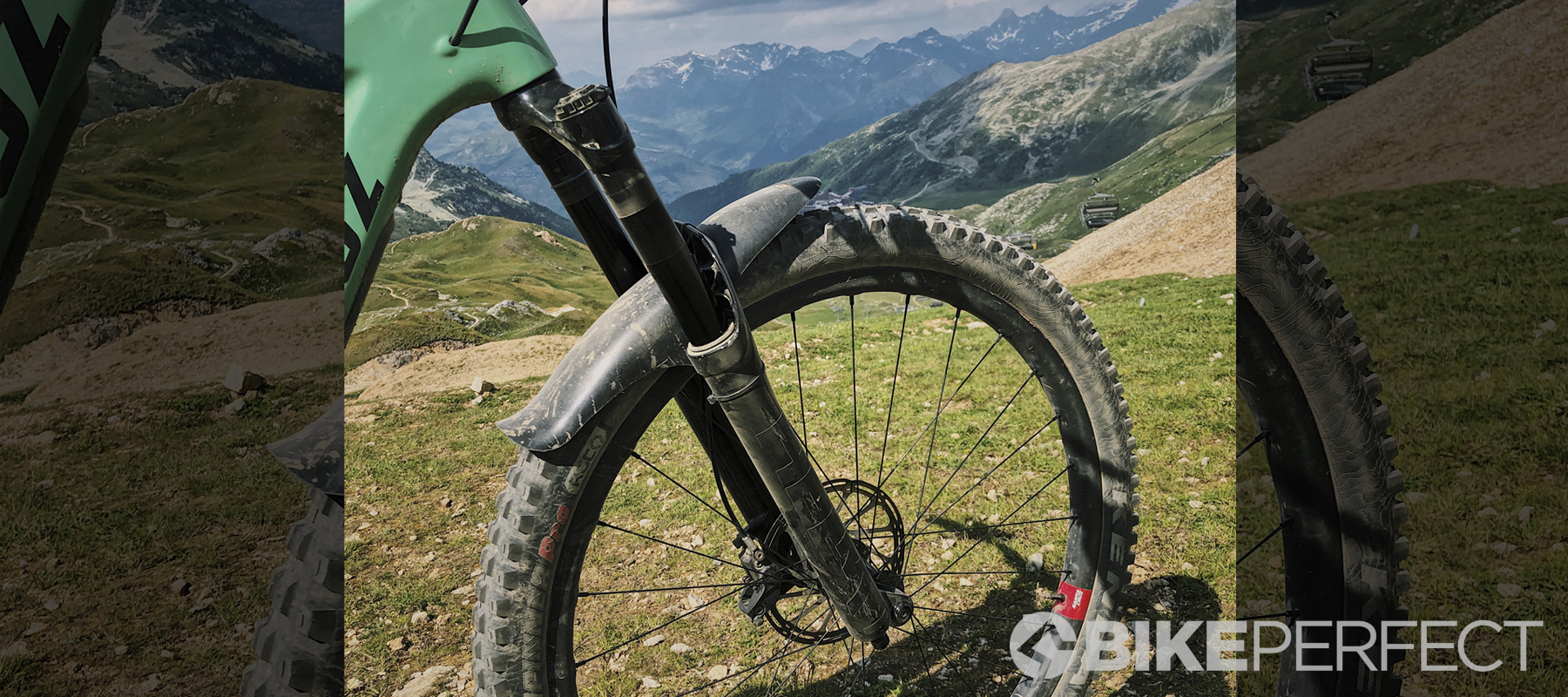Bike Perfect Verdict
Wide range of adjustability and improved sensitivity and control makes the Cane Creek Helm MKII a strong contender for those looking for a hard-charging fork
Pros
- +
Unrivalled support and confidence-inspiring control
- +
High levels of useable adjustability
- +
Huge versatility across several travel applications
- +
Fantastic composure when pushed hard
Cons
- -
Can be more time consuming and involved to set up than others
- -
Spare parts and service centres are less common than some alternatives
- -
May not be the best option for less aggressive riders
Why trust BikePerfect
For the last few years, the Cane Creek Helm suspension fork has been one of our favourites for hard-charging riding. For 2020 Cane Creek has introduced the MKII version with a number of major updates and changes which are said to improve the overall performance in nearly every way.
Construction
Despite the major internal overhaul the first-generation chassis design and visual shape remain the same for the MKII Helm, however, this is something we’re more than happy to see. Operating with 35mm stanchions means there is a near-perfect level of stiffness across its travel range, even when punished with heavy repeated impacts, yet it’s not so stiff it causes premature hand fatigue during longer runs.
The latest fully USA-assembled Helm is offered in both 27.5- and 29-inch (tested) wheel formats with travel options ranging from 130-170mm for 27.5in and 130-160mm for 29in. There are two offset choices for the 29in fork, a longer 51mm or shorter 44mm (tested) whereas 27.5’in version only gets the one 44mm option.
Fork travel can be adjusted internally by removing or adding clip-in spacers which are provided in the box. This is a simple and unique design that means there is no need to change the entire air spring like most other forks on the market and, I found that if you’re careful, you can remove the lower legs without losing any oil meaning there is no need to replenish fluid levels during this travel change. Owing to how easy this adjustment is, you can experiment with your bikes’ fork travel length without having to invest in an additional air spring, a great feature when searching for that optimal set-up.
The clever air spring adjustability doesn’t just stop there either. The Helm’s progressivity can be adjusted without the need to install any additional parts. Once the air spring top cap has been removed you’re greeted with the air piston seal that is locked in place with a wing nut. By releasing the wingnut you’re free to slide the seal up and down its aluminium shaft to ultimately change how hard the fork ramps up as it nears the end of its stroke. This is something we experimented with during the early stages of testing and the design is refreshingly easy to operate and adjust.
Probably the biggest difference with the air spring when compared to its competitors though is the way the positive and negative air chambers balance. Unlike Fox and RockShox systems which use a small indent in the fork’s stanchion to automatically balance the air chambers when the fork is compressed, the Helm requires a button on the bottom of the fork to be physically pressed to release the correct amount of air into the negative section of the air spring. This proved to be reliable during testing and while it is fiddlier to set up it does bring a new level of fine-tuning to the fork's set-up. By applying light pressure to the bars when equalising the fork, you can allow more air through to the negative chamber to boost initial sensitivity, a great feature if you’re specifically looking for that glued-to-the-floor front-tyre feel, however, we found a simple press of the button without applying any pressure offered the best results. It is worth noting though that running too much air in the negative will prevent the fork from reaching full travel.
Moving to the other side of the fork Cane Creek is still using an expanding bladder-style damper in the Helm but it’s now sealed with SKF seals and filled with 2.5W damper fluid, which is lighter than what was previously used. Cane Creek states these changes reduce initial stiction to provide a more supple ride feel. The wiper seals also see the switch to SKF which again is said to reduce the fork’s initial breakaway force. The damper also gets a new compression circuit tune which is said to expand the real-world usability of the 10 clicks of high-speed compression, 12 clicks of low-speed compression and 10 clicks of rebound compression.
There’s plenty of tyre clearance, room for a proper mudguard, a 180mm brake mount, and the new ‘D-Loc’ bolt-through axle is a massive improvement over Cane Creek's old system. We experienced no issues with this new design throughout testing – something that couldn’t be said for the old design.
At 2,070g the weight is competitive and due to the amount of customisation available, it can be tailored to work with everything from nimble short-travel trail bikes to race-ready enduro rigs. If you’re a coil-sprung fanatic Cane Creek also offers a coil-equipped version of the new Helm, which we’ll be getting our hands on soon.

Performance
Due to installing the Helm on the same morning we left for the Alps, set up began during our first 1,000m+ descent of the trip. Luckily, the varied Alpine trails provide the ultimate environment to test a suspension fork which is aimed at aggressive trail/enduro bike riding. After a few runs of experimenting with air pressure, I ended up with 68.5psi in the main positive chamber at 62kg This was nearly exactly what Cane Creek recommended to achieve 20-25% sag for my body weight which proves the set-up guide is a great starting point. I also ran the volume spacer seal two steps down from its highest position to provide a predictable ramp-up while leaving the last 5-10mm of travel for the heaviest of compressions.
From the first few hundred meters of trail, the claims of less friction and a lighter overall action are immediately apparent. The latest Helm does a superb job of ironing out high-frequency trail buzz without ever compromising support. It does this in a way that removes unwanted feedback but always clearly communicates the right trail signals so you always know exactly what the front wheel is doing and where it is going. When riding prolonged sections of off-camber trail the Helm manages to track and trace the grip points with flawless physical commentary to the rider. When riding back-to-back with other forks I genuinely feel this sensitive and composed motion from the Helm helps with both mental and physical fatigue on long sections of track.
While the overall feel is more alive and active than the Helm Mk1 the hyper composed and supportive traits of its predecessor are still apparent. This characteristic feels more rewarding the harder you ride it too; this makes the Helm a fantastic option for aggressive riders who want a fork that won’t flinch regardless of what you place in its path. Regardless of how heavy the nose landing or how big the wheel swallowing hole, Helm always soaks the impact with impressive finesse. This level of composure instils confidence on the trail too, blind hucks into root-infested landings aren’t an issue and the high levels of support encourage you to jump further and corner harder. It’s great under braking and even during a hard pull of the levers, it rides high, keeping the rider weight central and ready to attack the next section of trail.
In terms of downsides, it’s worth noting the Helm's operation is slightly louder than some of its rivals. Whilst this didn’t hinder performance or prove to be an annoyance to me, it’s worth considering if you are noise sensitive. Firm stroke support also means it’s not a comfort fork and less aggressive riders might prefer the more forgiving and free-flowing RockShox Pike or Lyrik fork. It’s not quite as set-and-forget as the RockShox Lyrik or Fox 36 for that matter - but if you’re a seasoned suspension tinkerer you’ll love that adjustability.
Verdict
The original Helm was impressive but the changes to the latest version make it an even stronger contender for the top step of the best mountain bike forks. Mixing incredible levels of control, impressive levels of small-bump sensitivity and bucket loads of adjustability leaves the door wide open when searching for that ultimate set up. It does require more knowledge than some other forks to get the most out of the setup and, it’s noisier than the Fox and RockShox competition, but if you have the time and knowledge the Helm is seriously worth considering as your next fork purchase.
Test Conditions
- Temperature: 15-30 degrees in mostly dry and dusty conditions
- Trail surface: Man-made and natural trails across the French Alps
- Route: Everything from man-made EWS and World Cup Downhill trails to ancient big mountain alpine paths
Tech Specs: Cane Creek Helm MKII Air fork
- Sizes: 27.5in 130mm -170mm and 29in 130mm -160mm
- Offset: 44mm 27.5in, 44mm and 51mm 29in
- Weight: 2070g 29-inch (Uncut steerer)
- Price: £899

Jim Bland is a product tester and World Cup downhill mechanic based in North Yorkshire, England, but working Worldwide. Jim’s chosen riding genre is hard to pinpoint and regularly varies from e-bike-assisted shuttle runs one day to cutting downcountry laps the next. Always on the hunt for the perfect setup, Jim will always be found comprehensively testing kit with World Cup racing levels of detail. His ultimate day out includes an alpine loam trail, blazing sunshine, and some fresh kit to test.
Rides: Santa Cruz Hightower, Santa Cruz v10, Specialized Kenevo.
Height: 170cm
Weight: 64kg

